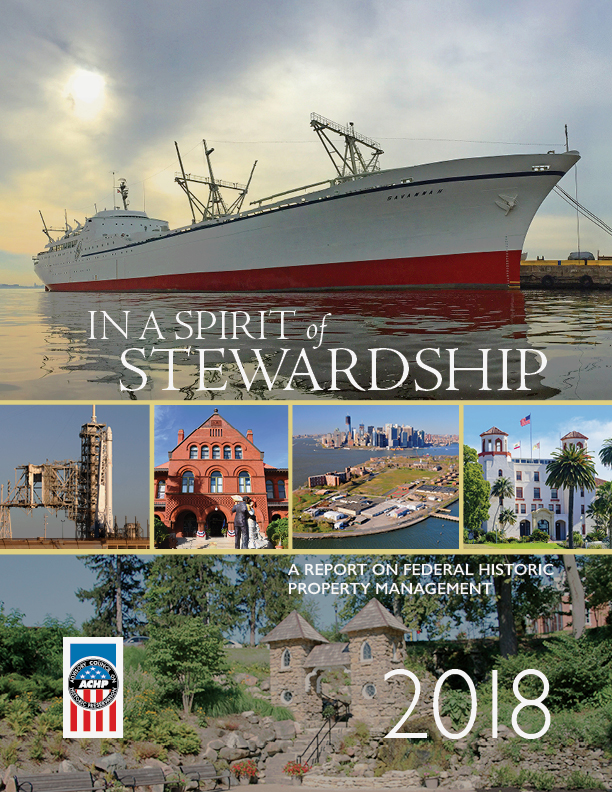In a Spirit of Stewardship: A Report on Federal Historic Property Management (2018)
Synopsis

Executive Summary
This report to the President is required every three years under Executive Order (EO) No. 13287, “Preserve America.” The report focuses on the state of the federal government’s efforts to identify, protect, and utilize their historic properties and their contribution to local economic development between 2014 and 2017. EO 13287 reinforces the role of federal agencies as stewards of their historic properties and underscores the importance of federal agency efforts to inventory, protect, and use these properties. Federal historic properties play a diverse range of roles, from providing infrastructure critical for agency missions, to housing members of the military and federal offices, as sacred places important to Native Americans and Native Hawai’ians, to sharing stories of American history with visitors.
Information in this report is derived primarily from the 23 federal agency progress reports submitted to the Advisory Council on Historic Preservation (ACHP) and the Secretary of the Interior. Agency reports focused on progress made in identifying, protecting, and using historic properties in federal ownership since the last report in 2015. Federal agencies continue to provide creative examples of historic properties adaptively reused and rehabilitated to be energy efficient and resilient, as well as historic properties leased or disposed to parties responsible for their preservation. Collectively, these reports also demonstrated that there remains wide-spread support among the public for the protection and use of historic properties, and that federal efforts to do so strengthen communities and contribute to a stronger economy through the creation of jobs.
In addition to the review of the agency progress reports, the findings and recommendations presented in Chapter 5 of this report also are informed by the ACHP’s extensive, and nationwide, interaction with federal agencies and preservation partners on various undertakings, programs, and initiatives over the last three years. The preservation findings and conclusions identified over the current reporting cycle include the following:
- Agencies that have already used Section 106 program alternatives were able to improve the efficiency and cost effectiveness of project reviews.
- Efforts to identify historic properties and ensure that consistent information about historic property inventory efforts are made available electronically can better inform and improve real property management and federal and non-federal planning.
- Partnerships can leverage limited federal resources and provide important benefits to federal agencies in the identification, protection, and use of historic properties.
- Agencies would benefit from more effective mechanisms to ensure timely involvement of Indian tribes and Native Hawai’ian organizations in property management activities and infrastructure planning.
- Further development of policies and procedures to assist federal agencies in considering historic properties as part of their efforts to comply with “Reduce the Footprint” requirements would improve preservation outcomes without delaying compliance with these requirements.
- Fostering and encouraging the reuse of historic facilities by federal agencies or others creates cost-effective preservation outcomes.
Recommendations to address these findings are presented in Chapter 5.
The ACHP is committed to assisting federal agencies in implementing these recommendations so that future actions proposed by the Administration, departments, and agencies recognize historic properties as important public assets and are given appropriate consideration when planning for federal real property management strategies and initiatives that address infrastructure renewal, energy efficiency, resiliency, and long-term preservation.
Click here for the 2018 report.